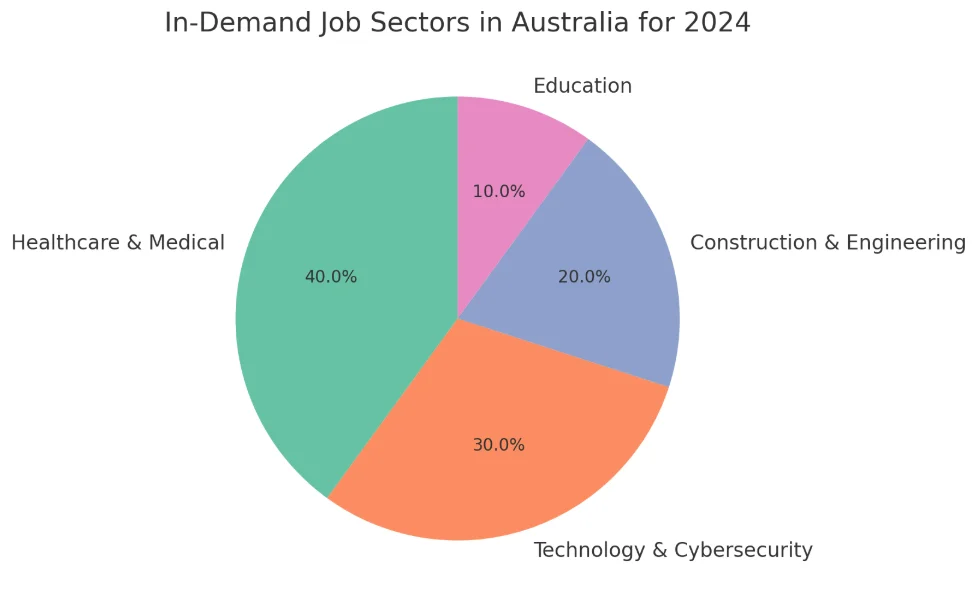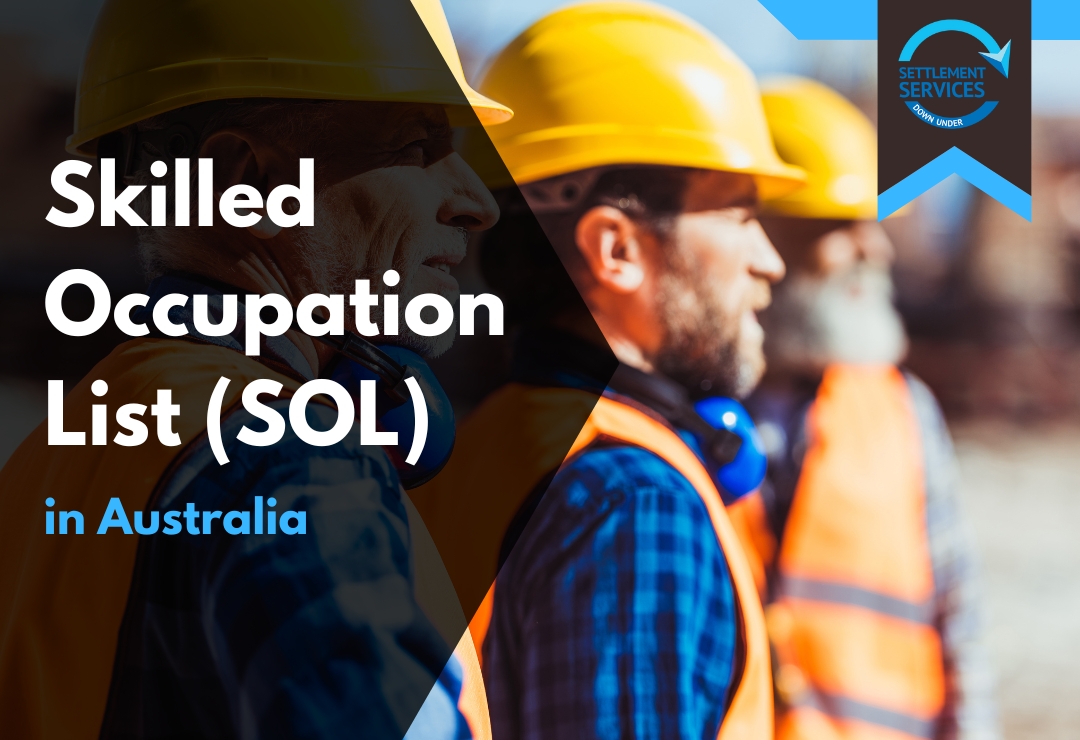Australia offers a promising future for skilled workers from around the globe. A key stepping stone to this exciting opportunity is the Skilled Occupation List (SOL). This comprehensive list outlines occupations in high demand across various industries. For aspiring migrants, understanding the SOL is crucial to crafting a successful career path in Australia.
In this guide, we’ll delve into the intricacies of the SOL, explore in-demand jobs, and provide insights into the skilled migration program. Whether you’re a seasoned professional or a recent graduate, this information will empower you to make informed decisions about your Australian journey.
Understanding the Skilled Occupation List
What is the Skilled Occupation List in Australia?
The Skilled Occupation List (SOL) is a comprehensive register maintained by the Australian government. It outlines occupations for which skilled workers are in high demand across the country. This list is a crucial component of Australia’s skilled migration program, designed to attract qualified professionals to contribute to the nation’s economic growth.
To be eligible for a skilled migration visa, your occupation must be listed on the SOL. It’s essential to note that the SOL is regularly updated to reflect changes in the labor market.
How does the SOL work?
The SOL operates as a benchmark for assessing the skills and qualifications of potential migrants. If your occupation is on the list, you may be eligible to apply for a skilled migration visa. The specific requirements and eligibility criteria vary depending on the visa subclass you choose.
To increase your chances of success, it’s crucial to understand the occupation codes and descriptions on the SOL. This information will help you determine if your skills and experience align with the required qualifications.
Importance of the SOL for Skilled Migration
The SOL serves as a cornerstone for Australia’s skilled migration program. By identifying occupations in high demand, it helps address skill shortages and ensures a steady supply of qualified workers to contribute to the economy.
For aspiring migrants, understanding the SOL is crucial for several reasons:
- Eligibility: Being on the SOL is often a prerequisite for applying for a skilled migration visa.
- Career Planning: It provides valuable insights into in-demand professions, helping you make informed career choices.
- Job Prospects: Securing a job on the SOL significantly enhances your employment opportunities in Australia.
By carefully analyzing the SOL, you can increase your chances of a successful migration journey and a fulfilling career in Australia.
In-Demand Jobs in Australia: A Career Launchpad
Identifying in-demand occupations
Australia’s thriving economy presents a wealth of opportunities for skilled workers. By leveraging the Skilled Occupation List (SOL) and partnering with career launch services, you can identify and pursue in-demand jobs that align with your skills and aspirations.
These services can provide invaluable guidance in navigating the Australian job market and connecting with potential employers. Popular sectors experiencing high demand include:
- Technology: Software developers, IT professionals, and cybersecurity experts are in high demand due to Australia’s digital transformation.
- Healthcare: Nurses, doctors, and allied health professionals are essential to the nation’s healthcare system.
- Engineering: Civil, mechanical, and electrical engineers are crucial for infrastructure development and resource management.
- Trades: Plumbers, electricians, and carpenters are in high demand for construction and maintenance projects.

It’s important to note that demand can fluctuate based on economic conditions and industry trends. Therefore, staying updated on the SOL and seeking guidance from career launch services is essential.
Factors influencing job demand
Several factors contribute to the fluctuations in job demand within the SOL:
- Economic Growth: A thriving economy often leads to increased demand for skilled workers across various sectors.
- Technological Advancements: Emerging technologies create new job roles while rendering some obsolete.
- Demographic Changes: Australia’s aging population and increasing diversity influence labor market needs.
- Government Policies: Government initiatives and investment in specific industries can impact job demand.
Understanding these factors can help you identify emerging opportunities and plan your career accordingly.
Technology and emerging roles
The rapid pace of technological advancement is reshaping the Australian job market. Emerging roles in fields like artificial intelligence, data science, and cyber security are gaining prominence. As technology continues to evolve, staying updated on the latest trends is crucial for career success.
Regional job opportunities
While major cities like Sydney and Melbourne offer abundant job opportunities, regional areas in Australia also present promising prospects. Many regional areas experience skill shortages, offering attractive incentives and a better work-life balance for skilled migrants.
Navigating the Skilled Migration Program
Visa options for skilled migrants
Australia offers several visa options for skilled migrants. The most common pathways include:
- Skilled Independent (Subclass 189): This visa is for highly skilled individuals who can independently meet the points test and occupation requirements.
- Skilled Nominated (Subclass 190): This visa requires nomination from a state or territory government.
- Skilled Work Regional (Provisional) (Subclass 491): This visa is for skilled workers sponsored by an eligible family member or employer in a designated regional area.
- Employer Sponsored (Subclass 186): This visa is for skilled workers sponsored by an Australian employer.
Each visa category has specific eligibility criteria, including education, work experience, language proficiency, and age.
Point system and eligibility criteria
The skilled migration program operates on a points-based system. Points are awarded for factors such as age, qualifications, work experience, language proficiency, and occupation. To be eligible, you must score a minimum number of points.
Key eligibility criteria include:
- Occupation on the SOL
- Required qualifications
- Sufficient work experience
- English language proficiency
- Age
- State or territory nomination (for applicable visas)
State and territory sponsorship
Some skilled migration visas require sponsorship from a state or territory government. This can increase your chances of success, as it often involves additional points. Each state or territory has its own nomination criteria and priorities.
Tips for Maximizing Your Chances of Australian Skilled Migration
Building a strong skillset
To increase your competitiveness, focus on building a strong skillset aligned with in-demand occupations. Consider pursuing additional qualifications, certifications, or training to enhance your profile. Continuous learning and upskilling demonstrate your commitment to professional development.
Gaining relevant work experience
Practical experience is highly valued in the skilled migration process. Aim to gain relevant work experience in your chosen field to strengthen your application. Volunteer work, internships, or part-time jobs can also be beneficial.
Language proficiency
English language proficiency is a crucial requirement for most skilled migration visas. Achieving a high score in an approved English language test is essential.
Preparing for the skills assessment
Many occupations require a skills assessment conducted by a designated assessing authority. Familiarize yourself with the assessment process and requirements for your occupation. Adequate preparation is key to a successful outcome.
Navigating the Skilled Occupation List (SOL) and the skilled migration process requires careful planning and preparation. By understanding the in-demand occupations, visa options, and eligibility criteria, you can increase your chances of securing a successful future in Australia.
Remember to stay updated on the latest changes to the SOL and immigration policies. At Settlement Services Down Under, we specialize in helping migrants settle in Australia and focus on aligning your skillset and career to Australian SOL list.
FAQs about the Skilled Occupation List (SOL) and Skilled Migration
1. What is the Skilled Occupation List (SOL), and why is it important?
The Skilled Occupation List (SOL) is a government-maintained list of occupations where Australia has a shortage of skilled workers. It’s crucial for skilled migration as it determines eligibility for various visa subclasses.
2. How often is the SOL updated?
The SOL is regularly updated to reflect changes in the Australian labor market. It’s essential to check for updates to ensure your occupation remains on the list.
3. Can I apply for a skilled migration visa if my occupation is not on the SOL?
Generally, no. Your occupation must be listed on the SOL to be eligible for most skilled migration visas. However, there might be exceptions for specific visa categories or circumstances.
4. What factors influence the inclusion of an occupation on the SOL?
Factors such as labor market demand, skill shortages, and economic conditions influence which occupations are included on the SOL.
5. How can I improve my chances of being selected for a skilled migration visa?
To increase your chances, focus on obtaining relevant qualifications, gaining work experience, improving your English language skills, and potentially targeting occupations in high demand or regional areas.
6. What is the difference between state and federal sponsorship?
State and territory governments can nominate skilled migrants for specific occupations. Federal sponsorship is provided by the Australian government for certain visa categories.
7. What are the common challenges faced by skilled migrants?
Common challenges include meeting the points test, securing a job offer, obtaining required qualifications, and adapting to life in Australia.







